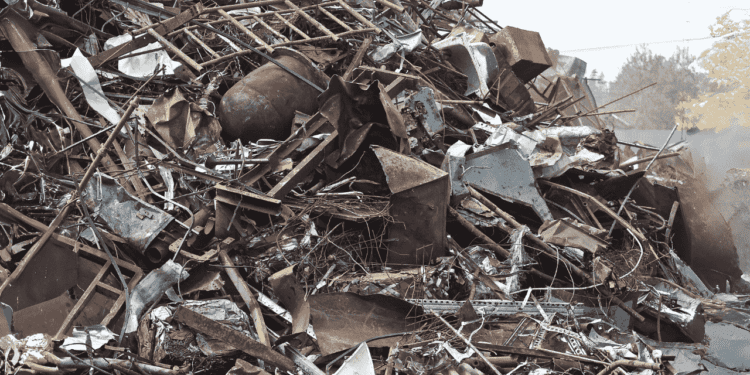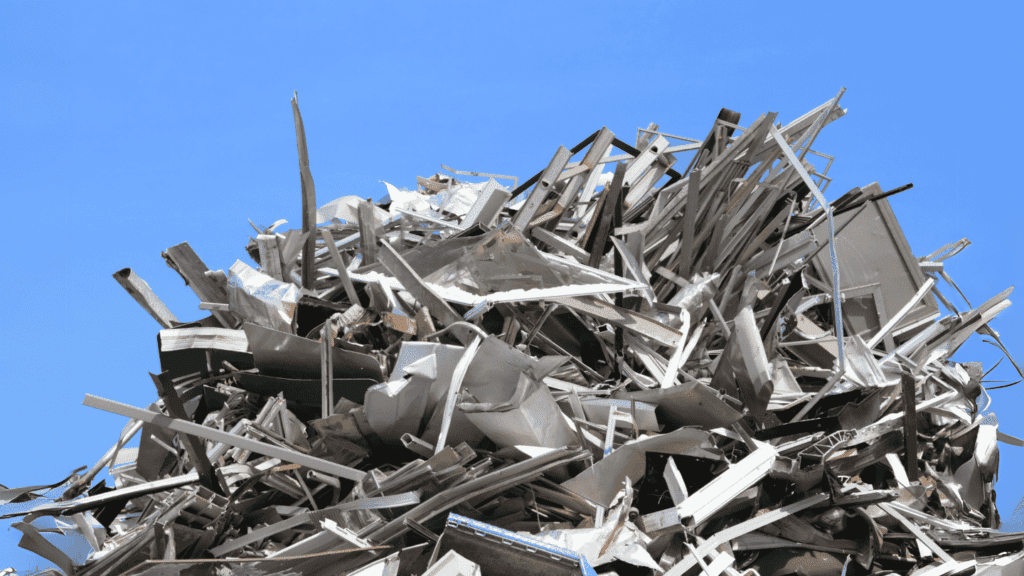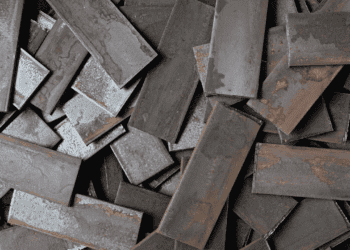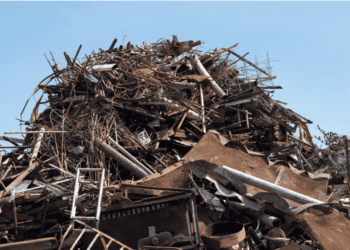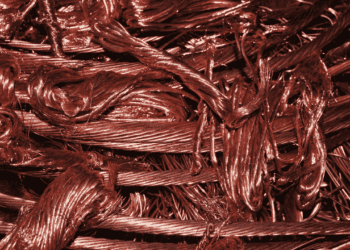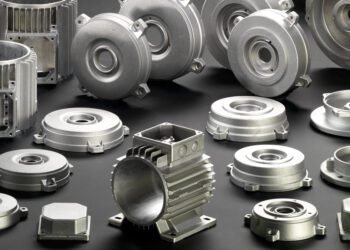Introduction To Rate of Scrap in India
In the dynamic landscape of India’s industrial sector, the rate of scrap holds significant importance. From copper to steel, brass to aluminium, understanding the trends and dynamics of scrap rates is crucial for various stakeholders, including manufacturers, traders, and policymakers. This article delves into the intricate details of scrap rates in India, offering insights, analysis, and actionable information.
Click Here For Latest Scrap Metal Rates
Understanding Scrap Rates Across Materials
Copper Market Dynamics
Copper, often referred to as ‘Tamba’ in Hindi, is a vital metal in various industries, including electronics, construction, and automotive. The rate of copper scrap in India fluctuates based on global demand-supply dynamics, currency fluctuations, and domestic consumption patterns. Currently, the Tamba scrap rate today reflects a steady increase due to rising demand from infrastructure projects and the electrical sector.
Iron and Steel Scrap Rates
Iron and steel, the backbone of industrial development, also witness dynamic pricing trends. Today iron rates and steel scrap rate today are influenced by factors such as global steel prices, domestic demand, and government policies on imports and exports. Loha scrap rate today might show volatility due to changes in raw material costs and environmental regulations impacting production.
Brass and Aluminium Scrap Prices
Brass, known as ‘Pital’, and aluminum are essential metals used in various applications, from manufacturing to construction. Brass scrap rate today and aluminium scrap rate today are influenced by similar factors affecting other metals, including market demand, supply chain disruptions, and scrap collection and recycling initiatives. Monitoring pital rate in and aluminum rate in provides insights into industrial activity and economic growth.
Other Scrap Materials
Beyond the prominent metals like copper, iron, steel, brass, and aluminium, other materials also contribute to the scrap market. Rubber scrap metal, plastic scrap metal, and compressor scrap metal are examples of materials with their unique pricing dynamics. Keeping track of today plastic rates and rubber scrap rate today aids in understanding trends in the automotive, packaging, and industrial sectors.
Click Here For Latest Scrap Metal Rates
Factors Influencing Scrap Rates
Several factors contribute to the fluctuation of Rate of scrap in India :
- Global Market Trends: Changes in global demand and supply affect the prices of raw materials, influencing scrap rates.
- Domestic Industrial Activity: Economic growth, infrastructure development, and industrial expansion drive demand for metals, impacting scrap rates.
- Government Policies: Regulations on imports, exports, recycling initiatives, and environmental norms influence scrap market dynamics.
- Currency Fluctuations: Exchange rate variations impact the cost of imported scrap materials, affecting domestic rates.
Analyzing Trends and Making Informed Decisions
Click Here For Latest Scrap Metal Rates
Comparative Analysis of Rate of Scrap in India (Per kg Rate 2024)
| Metal | Today’s Rate (INR/kg) | Trend |
|---|---|---|
| Copper | 500 | Increasing |
| Iron | 25 | Fluctuating |
| Steel | 35 | Stable |
| Brass | 350 | Increasing |
| Aluminium | 150 | Fluctuating |
Join our: Whatsapp Group
Key Insights:
- Copper prices are steadily increasing due to high demand from infrastructure projects and the electrical sector.
- Iron rates fluctuate due to changes in global steel prices and domestic demand.
- Steel prices remain relatively stable, reflecting steady demand from construction and manufacturing sectors.
- Brass rates show an upward trend, indicating growing industrial activity and demand for brass components.
- Aluminium prices exhibit fluctuations due to global market trends and changes in raw material costs.
Click Here For Latest Scrap Metal Rates
Famous Cities in India Known for Scrap Markets
India, a vast and diverse country, is home to numerous cities that play pivotal roles in various industries, including the scrap market. From bustling metropolitan areas to smaller trading hubs, these cities contribute significantly to the country’s scrap trade. Below are some of the famous cities in India renowned for their vibrant scrap markets:
- Mumbai, Maharashtra:
Mumbai, the financial capital of India, boasts a thriving scrap market. Situated on the west coast, Mumbai serves as a major hub for the import and export of scrap materials. The city’s strategic location, coupled with its robust transportation infrastructure, makes it a preferred destination for scrap traders and recyclers. - Delhi, National Capital Territory (NCT):
Delhi, the capital city of India, is home to a bustling scrap market, particularly in areas like Mayapuri and Jama Masjid. With a large population and extensive industrial activities, Delhi generates substantial quantities of scrap materials, driving the demand for recycling and reuse. - Kolkata, West Bengal:
Kolkata, located in the eastern part of India, has a long-standing tradition of scrap trading. The city’s proximity to major ports facilitates the import and export of scrap materials, attracting traders from across the country. Kolkata’s scrap market caters to diverse industries, including manufacturing, construction, and automotive. - Chennai, Tamil Nadu:
Chennai, situated on the southeastern coast of India, is renowned for its vibrant scrap market. The city’s industrial base, comprising sectors like automotive, electronics, and shipbuilding, generates a significant amount of scrap materials. Chennai’s scrap market is known for its organized trading practices and diverse range of materials. - Ahmedabad, Gujarat:
Ahmedabad, located in the western state of Gujarat, is a prominent center for the scrap trade. The city’s strong manufacturing sector, coupled with its strategic location near major ports, contributes to its thriving scrap market. Ahmedabad is known for its well-established recycling facilities and efficient supply chain networks. - Hyderabad, Telangana:
Hyderabad, situated in southern India, has emerged as a key player in the scrap market. The city’s growing industrial presence, particularly in sectors like information technology and pharmaceuticals, generates a steady supply of scrap materials. Hyderabad’s scrap market caters to both local industries and export-oriented businesses. - Pune, Maharashtra:
Pune, located in the western state of Maharashtra, is renowned for its automotive and manufacturing industries. The city’s scrap market benefits from its proximity to Mumbai and its well-developed industrial infrastructure. Pune’s scrap traders cater to the needs of diverse sectors, including engineering, construction, and packaging. - Bangalore, Karnataka:
Bangalore, often referred to as the ‘Silicon Valley of India,’ is a major center for technology and innovation. The city’s scrap market primarily serves the electronics and IT sectors, recycling a wide range of materials, including e-waste. Bangalore’s scrap traders leverage the city’s technological prowess to adopt sustainable recycling practices.
These cities, with their robust infrastructure, diverse industrial base, and strategic location, play integral roles in Rate of scrap in India. From facilitating trade and recycling to driving economic growth, they contribute significantly to the country’s sustainable development goals.
Click Here For Latest Scrap Metal Rates
Actionable Steps for Stakeholders
- Manufacturers: Monitor scrap rates to optimize material procurement strategies and production costs.
- Traders: Stay updated on market trends to make informed decisions on buying and selling scrap materials.
- Policymakers: Implement supportive policies for the recycling industry to promote sustainable practices and resource conservation.
- Investors: Analyze scrap market trends for potential investment opportunities in metal recycling and related sectors.
Click Here For Latest Scrap Metal Rates
FAQs :
- What is the significance of scrap rates in India’s industrial sector?
Understanding the importance of scrap rates for manufacturers, traders, and policymakers. - What factors influence the fluctuation of copper scrap rates in India?
Insights into the dynamics affecting the pricing of copper scrap, including global demand, currency fluctuations, and domestic consumption patterns. - How do iron and steel scrap rates in India vary?
Exploring the factors impacting iron and steel scrap rates, such as global steel prices, domestic demand, and government policies. - What are the key factors influencing brass and aluminium scrap prices?
Understanding the drivers behind the pricing trends of brass and aluminium scrap, including market demand, supply chain disruptions, and recycling initiatives. - What other materials contribute to India’s scrap market, and how do they fluctuate in price?
Insights into the pricing dynamics of materials like rubber, plastic, and compressor scrap, and their impact on various sectors. - What are the main factors contributing to the fluctuation of scrap rates in India?
An overview of the global market trends, domestic industrial activity, government policies, and currency fluctuations affecting scrap rates. - What are the key insights from the comparative analysis of scrap rates in 2024?
Understanding the current trends and fluctuations in scrap rates for different metals like copper, iron, steel, brass, and aluminium. - Which cities in India are famous for their scrap markets?
Exploring prominent cities like Mumbai, Delhi, Kolkata, Chennai, Ahmedabad, Hyderabad, Pune, and Bangalore known for their vibrant scrap trading activities. - What actionable steps can stakeholders take based on scrap market insights?
Providing recommendations for manufacturers, traders, policymakers, and investors to leverage scrap market trends effectively. - What is the significance of monitoring today’s scrap rates across materials for stakeholders?
Highlighting the importance of staying updated on current scrap rates to make informed decisions and optimize operations in India’s industrial landscape.
Join our: Whatsapp Group
Conclusion
The rate of scrap in India is a dynamic aspect of the industrial ecosystem, influenced by various factors like global market trends, domestic demand, and government policies. By understanding the trends and analyzing key insights, stakeholders can make informed decisions to optimize operations, mitigate risks, and capitalize on emerging opportunities in the scrap market. Keeping a close watch on today’s scrap rates across different materials empowers businesses and policymakers to navigate the complexities of the evolving industrial landscape effectively.



